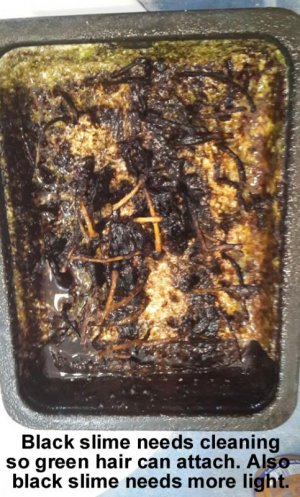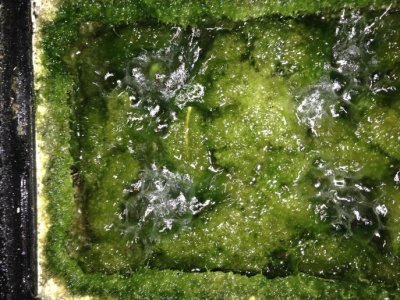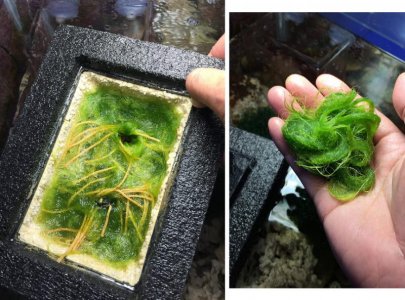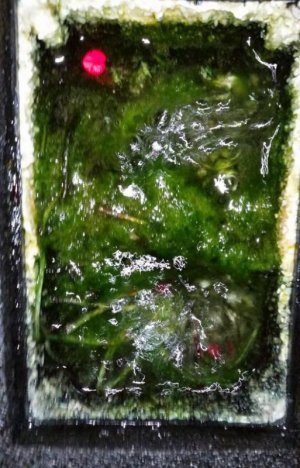Scrubber Build
Scrubber Build
I hope I am worthy enough to join the scrubber club, you let me know.
The goal of this project was mainly eliminate the hair algae in my display. I have been battling with hair algae for about 6+ or so months now and I'm just getting tired of going into the display with a toothbrush and a siphon to get it all out every 3 or so weeks.
Other requirements are that is must be silent. The tank is in my bedroom and the trickling water noise really bothers me at night. The pump noise is much less of an issue but still needs to be quite.
Right now I have Vertex Omega 130 for a skimmer and it creates the most noise out of the entire system so if I could eliminate the skimmer that would be great but it is not a requirement. Originally the skimmer was meant for a 45 gallon tank not the 80 gallon tank it is currently filtering. I think this undersized piece of equipment is one of the main factors that lead to the nuisance algae in the tank.
So anyway my scrubber needed to fit over a 30 gallon breeder tank that I have as a sump. After doing a ton of research on turf scrubbers (mostly on this 350+ page thread) I decided on going with a 7"x7" screen and lit with 660nm and 445nm LED's. This size should be good enough for my 80 gallon and support around 4 cubes of food per day.
I decided to make the scrubber out of wood since I already have the correct tools for the job. I would seal the wood with 4 coats of polyurethane to protect it. It started with the base and it was cut to size to fit on the plastic rim of the sump.
An acrylic chimney (as I call it) was built and fitted inside the base. The slot pipe would hang from this so no water would be in direct contact with the wood.
The total size of the screen was about 13"x7" but it I made it this long because I wanted the screen to contact the water in the sump. This was to keep the scrubber as quiet as possible and worked out ok. Only a 7"x7" section was ruffed up with a hole saw (not shown in the picture) and would receive direct light from the LED's
The plumbing consisted of a bulkhead that was inserted into the wood so that when I removed the slot pipe for cleaning it would not fall over. Also a ball valve was added so I can dictate how much flow the screen receives.
The lighting was done with 8 660nm (red) LED's and 1 445nm (blue) LED. The 8 around the outside are red and the one in the center is blue. The LED's are powered by a 700mA constant current Meanwell driver and the LED's are rated at 3 watts each (around 1.5 actual watts). All of the LED's were wired in series including the blue one. Currently I am using an acrylic diffusion plate that I made with a palm sander and some spare 1/8th inch acrylic. This plate is most likely going to be removed as the screen matures.
The LED's were mounted to a 1/8th inch aluminum plate and aluminum U stock was added to each side to help with head dissipation. This might not be the most ideal heat sink but it seems to be working well enough.
After 8 days of running the scrubber this is what I got for a result. I took the screen out and cleaned it in salt water lightly scrubbing it with my finger tips just to dislodge any loose algae that was growing on it. You can also see where the screen was ruffed up and receiving direct light.
Some of the problems that I am facing is I don't think I have enough flow going through the screen however if I turn it up the flow anymore it creates to much noise. I never measured the actual gallons per hour that I am getting from the pump at the current setting but I don't think its anywhere close to 35 gallons per hour per inch of screen. We will see in time how it does.
Constructive criticism is encouraged so please let me know if I went wrong somewhere and how to correct the problem. I have to thank everyone for posting the information on the thread (even if it took me a week to read). Without the community posting their results I would not have build this to help me create a better reef tank.
If you have any questions let me know, however i cannot reply to PM's. Just an FYI.
Thanks Again
















